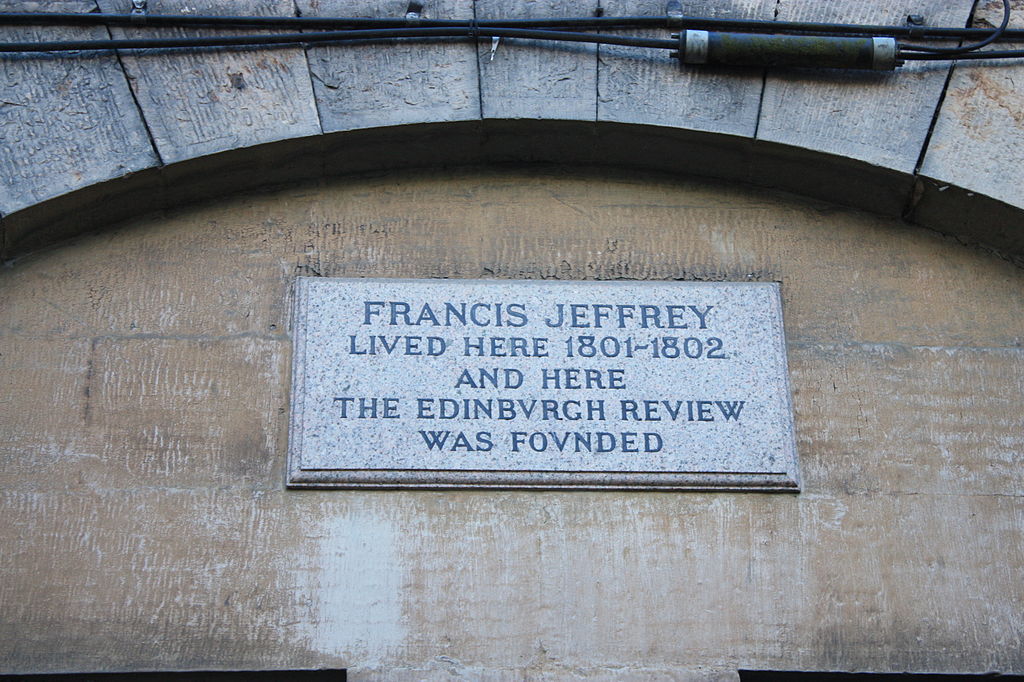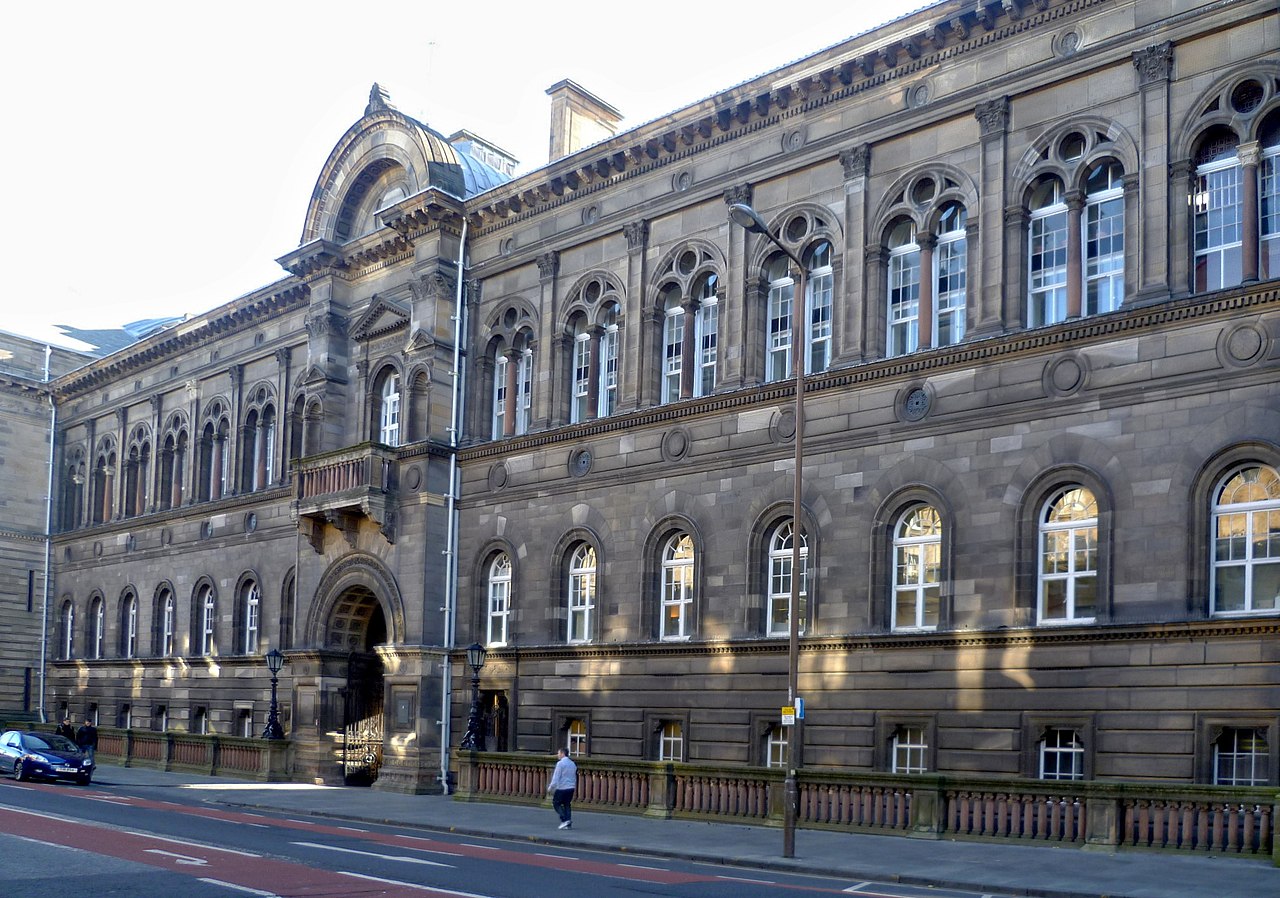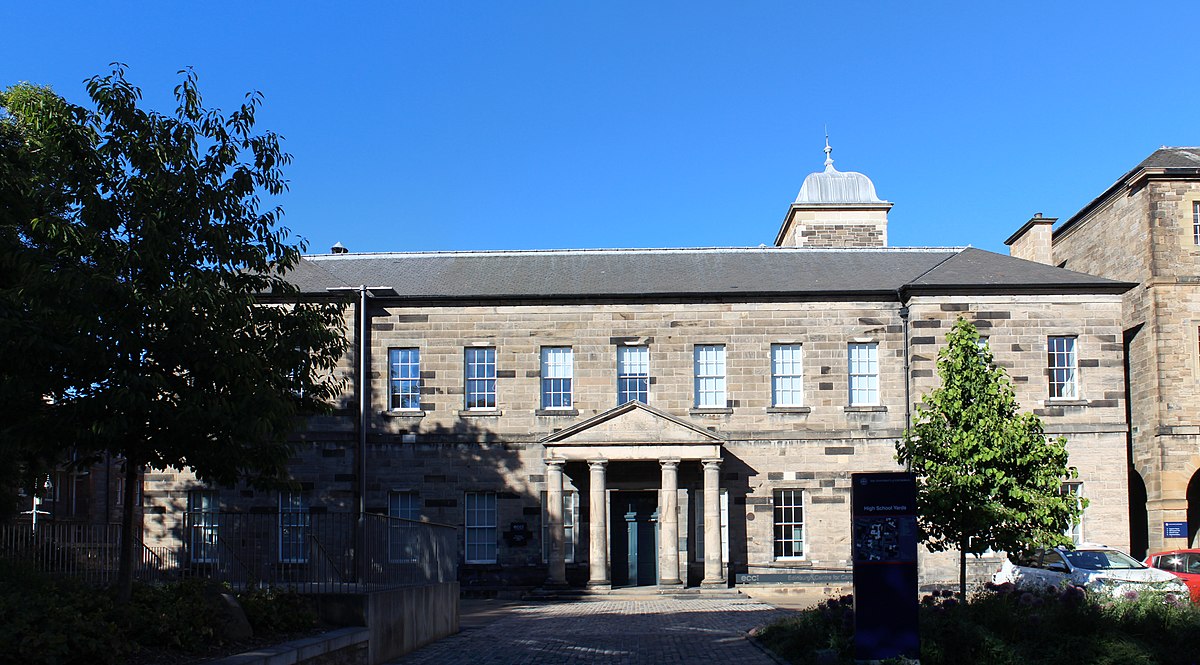
High School Yards
Photograph: Chabe01, Wikimedia Commons (BY-SA)
High School Yards
The Royal High School of Edinburgh is one of the oldest in Europe, considered first established in 1128 in association with the founding of Holyrood Abbey by King David the first. Originally called the "Tounis Scule" it had a profound influence on the education of the city and among its alumni are many renowned figures of the Enlightenment, mentioned elsewhere in this guide, including:
• Robert Adam (1728–1792), architect to George III
• James Keir (1735–1820), chemist and industrialist
• Thomas Coutts (1735–1822), London merchant banker
• James Hutton (1726–1797), geologist and discoverer of graphite veins
• William Smellie (1740–1795), encyclopaedist
• Robert Fergusson (1750–1774), poet
• Walter Scott (1771–1832), poet and novelist
• Francis Jeffrey (1773–1850), writer and judge
• Robert Knox (1791–1862), anatomist and ethnologist
• William Brodie (1741–1788), deacon and thief
• Henry Brougham, 1st Baron Brougham and Vaux (1778–1868), Whig lord chancellor
• Dugald Stewart (1753–1828), mathematician and philosopher
Given that the Royal High School had a virtual monopoly on boys' education among the Edinburgh burgesses and that enrolment records before the mid eighteenth century are incomplete, it is postulated but unconfirmed that the philosopher David Hume (1711–1776) was also a pupil.
The school has occupied multiple sites over the centuries, including this building at High School Yards between 1777 and 1829. Following this it relocated to a famous building and copy of the temple of Theseus in Athens, which we will view during the New Town Walk. The author of this guide was a pupil of this school.
Walk 40 metres south-west on High School Yards towards High School Wynd.
Continue for 130 metres onto Infirmary Street.
Turn left onto South Bridge and you will see Edinburgh University Old College on the opposite side of the road.
You have arrived at another ancient site of education. Established as the "Tounis College", Edinburgh University first admitted students in October 1583. Beginning in 1789 the Old College became the principal site of the university at the height of the Enlightenment. The original architectural design was created by the Scottish neoclassicist architect and interior designer, Robert Adam (1728–1792), a leader of the classical revival in the United Kingdom from 1760 until his death, who influenced Western architecture in Europe and North America, most notably through his renowned Adam Style.
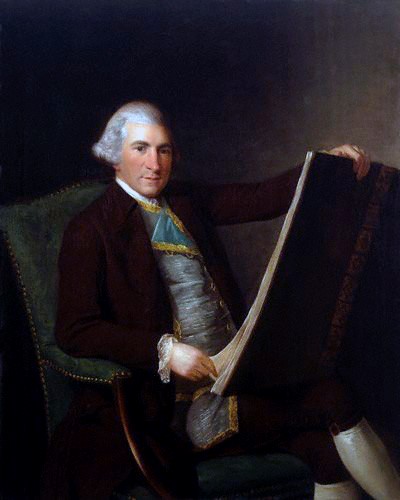
Portrait of Robert Adam, attributed to George Willison
The University was an incubator of the Enlightenment and many leading figures were alumni or teachers, including:
• David Hume (1711 -1776), philosopher
• Adam Ferguson (1723 – 1816), philosopher and sociologist
• James Boswell (1740 – 1795), biographer
• Walter Scott (1771 -1832), novelist and poet
• James Hutton (1726 -1797), geologist
• Robert Adam (1728–1792), architect
• Joseph Black (1728 – 1799, physician and chemist
• Benjamin Rush (1745 – 1813) and James Wilson (1742 – 1798), among founding fathers of the United States
• Adam Smith (1723 – 1790), philosopher and economist
• Daniel Rutherford (1749 – 1819), physician and chemist
• William Cullen (1710 – 1790), physician and chemist
In his Short History of the University of Edinburgh, the author D.B. Horn writes of William Robertson (1721 – 1793) that "The thirty years during which [he] presided over the University perhaps represent the highest point in its history." Robertson also became Moderator of the General Assembly of the Church of Scotland in 1763, and Historiographer Royal in 1764.
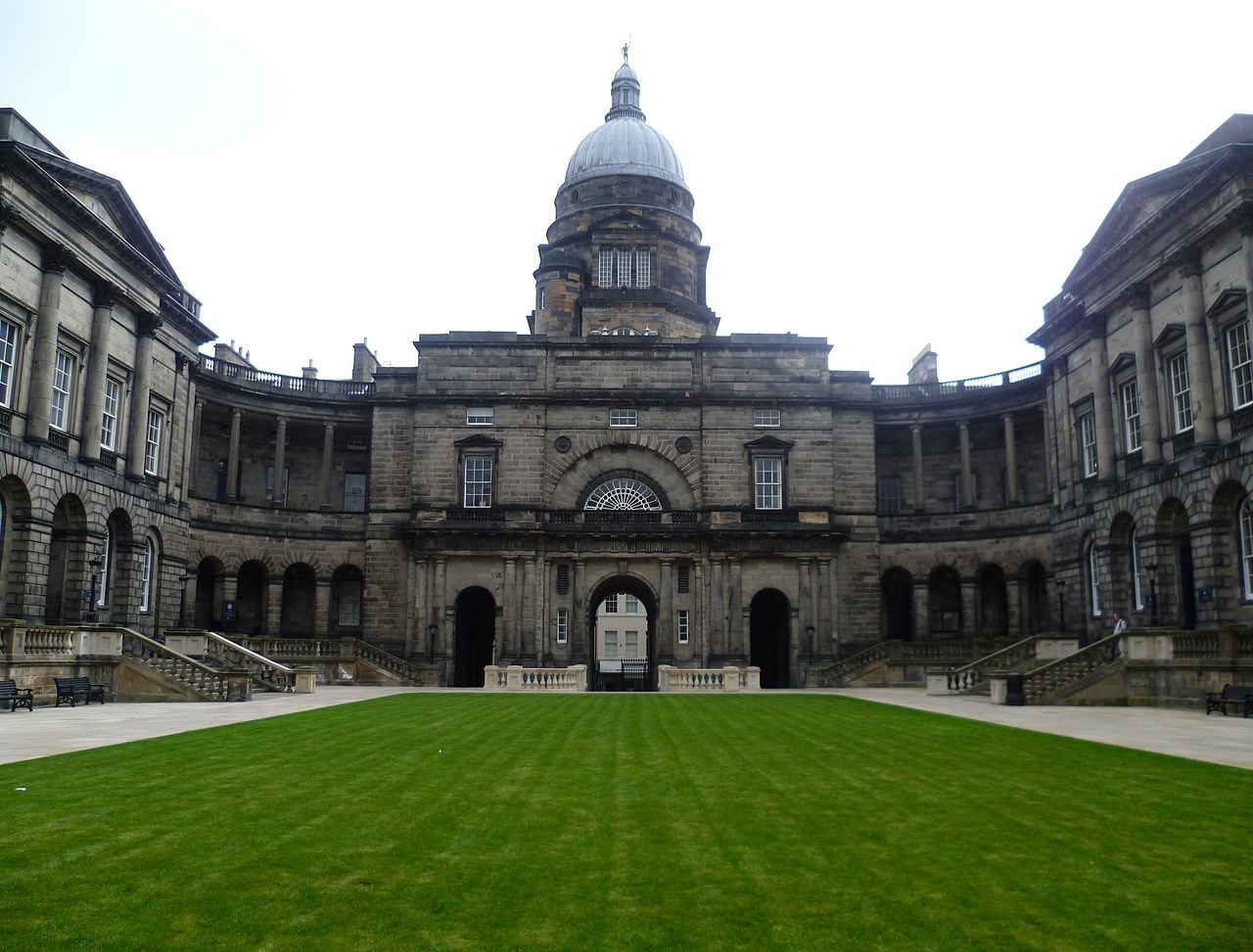
Old College of Edinburgh University
Photograph: kim Traynor, Wikimedia Commons (BY-SA)
The old college continues to this day the tradition of the Speculative Society, founded in 1764 and considered the oldest debating society in the world. It meets on Wednesdays by candlelight and until 2015 only admitted men, most of whom were lawyers. Its purpose is to advance public speaking and literary composition and over the years has included Walter Scott, Lord Brougham, Francis Horner, Francis Jeffrey and Robert Louis Stevenson. Fortunately, the Society has finally pulled itself into the 21st. century and permitted women members.
In fact, the Speculative Society was one of many 18th century Enlightenment clubs and societies, including the Crochallan Fencibles (see section 5) the Cape Club and the Select Society, later revised as The Poker Club. The Cape Club, founded in the 1700s met in The Isle of Man Arms, Craigs Close and was another convivial and riotous affair. The poet Robert Fergusson dedicated his Poem Auld Reekie to his fellow Knights of The Cape, noting that:
"Now mony a club, jocose and free,
Gie a' to merriment and glee:
Wi' sang and glass, they fley the pow'r
O' care that wad harrass the hour."
Reconstituted in 1964, the Cape Club continues to meet on a monthly basis.
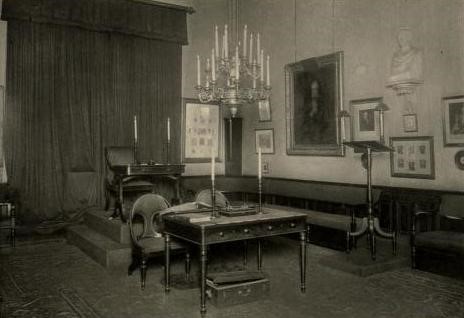
Photo of the private debating room of The Spec in Old College illuminated by candles
Reproduced from <span class="wikiexternallink" xmlns="http://www.w3.org/1999/xhtml"><a class="wiki" href="https://www.tomminogue.com/tom/?p=3517"><span class="wikigeneratedlinkcontent">https://www.tomminogue.com/tom/?p=3517</span></a></span>
